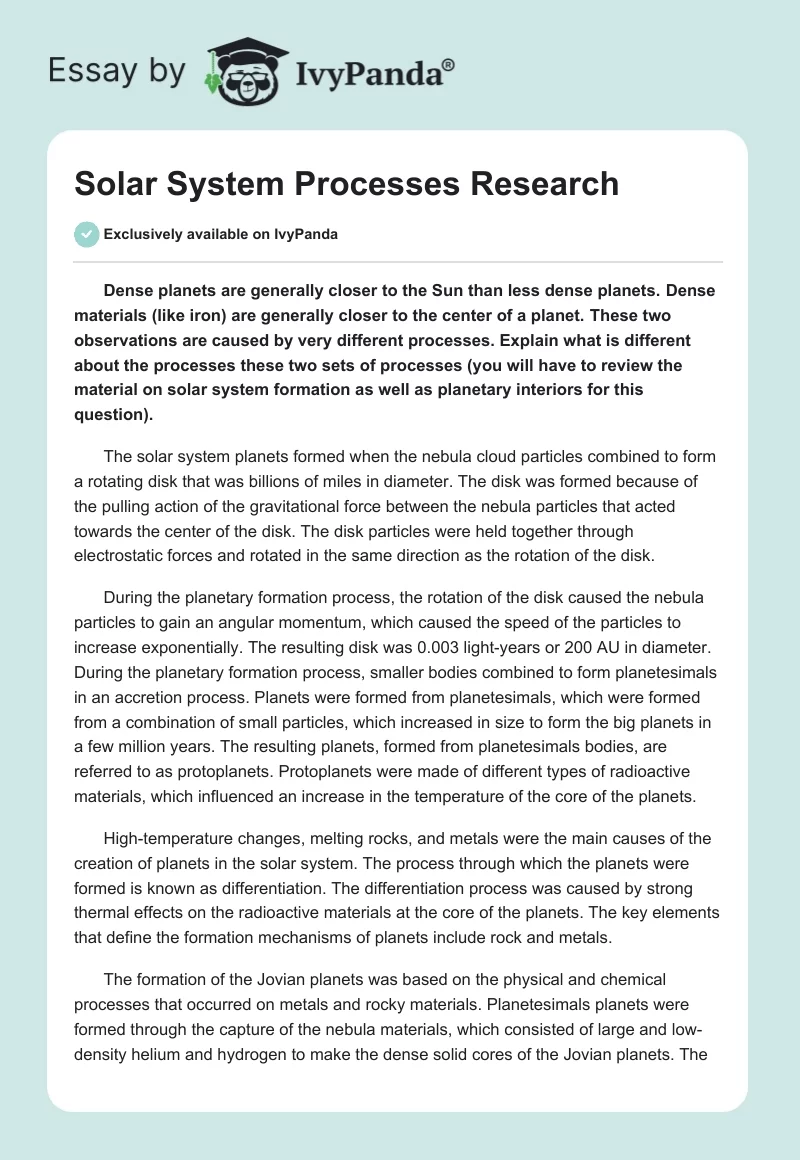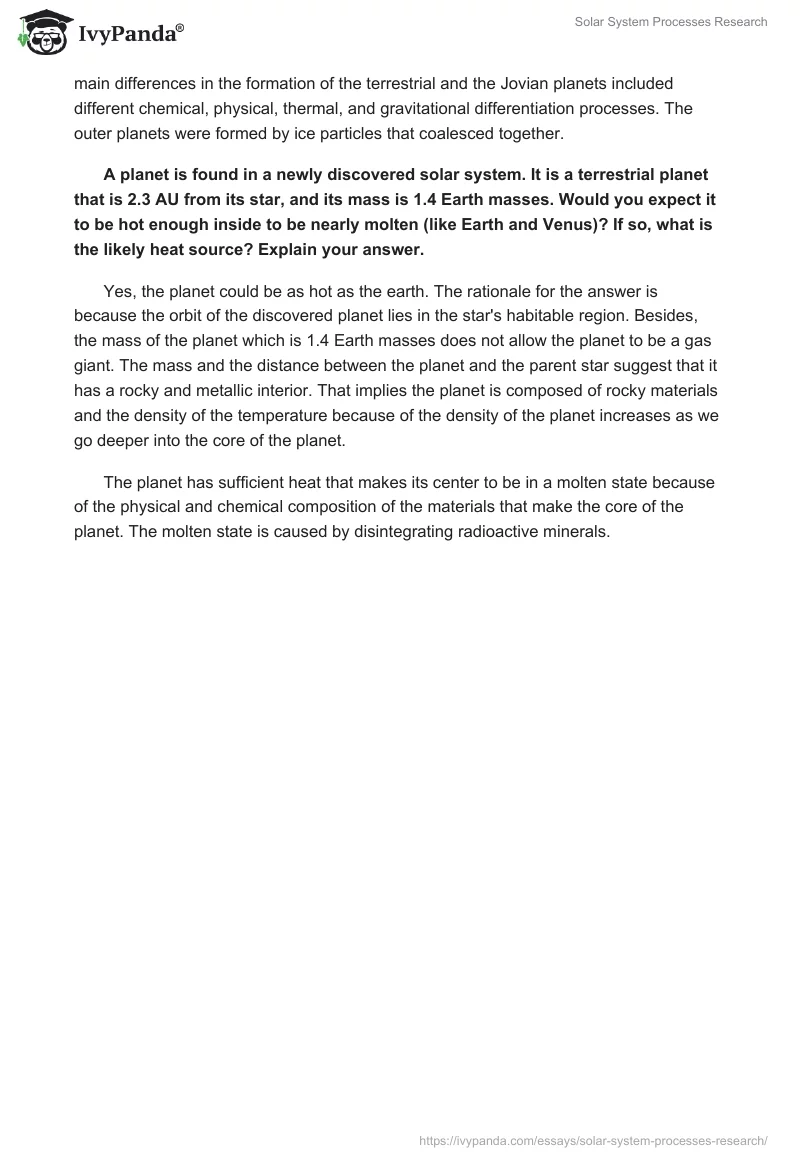Dense planets are generally closer to the Sun than less dense planets. Dense materials (like iron) are generally closer to the center of a planet. These two observations are caused by very different processes. Explain what is different about the processes these two sets of processes (you will have to review the material on solar system formation as well as planetary interiors for this question).
The solar system planets formed when the nebula cloud particles combined to form a rotating disk that was billions of miles in diameter. The disk was formed because of the pulling action of the gravitational force between the nebula particles that acted towards the center of the disk. The disk particles were held together through electrostatic forces and rotated in the same direction as the rotation of the disk.
During the planetary formation process, the rotation of the disk caused the nebula particles to gain an angular momentum, which caused the speed of the particles to increase exponentially. The resulting disk was 0.003 light-years or 200 AU in diameter. During the planetary formation process, smaller bodies combined to form planetesimals in an accretion process. Planets were formed from planetesimals, which were formed from a combination of small particles, which increased in size to form the big planets in a few million years. The resulting planets, formed from planetesimals bodies, are referred to as protoplanets. Protoplanets were made of different types of radioactive materials, which influenced an increase in the temperature of the core of the planets.
High-temperature changes, melting rocks, and metals were the main causes of the creation of planets in the solar system. The process through which the planets were formed is known as differentiation. The differentiation process was caused by strong thermal effects on the radioactive materials at the core of the planets. The key elements that define the formation mechanisms of planets include rock and metals.
The formation of the Jovian planets was based on the physical and chemical processes that occurred on metals and rocky materials. Planetesimals planets were formed through the capture of the nebula materials, which consisted of large and low-density helium and hydrogen to make the dense solid cores of the Jovian planets. The main differences in the formation of the terrestrial and the Jovian planets included different chemical, physical, thermal, and gravitational differentiation processes. The outer planets were formed by ice particles that coalesced together.
A planet is found in a newly discovered solar system. It is a terrestrial planet that is 2.3 AU from its star, and its mass is 1.4 Earth masses. Would you expect it to be hot enough inside to be nearly molten (like Earth and Venus)? If so, what is the likely heat source? Explain your answer.
Yes, the planet could be as hot as the earth. The rationale for the answer is because the orbit of the discovered planet lies in the star’s habitable region. Besides, the mass of the planet which is 1.4 Earth masses does not allow the planet to be a gas giant. The mass and the distance between the planet and the parent star suggest that it has a rocky and metallic interior. That implies the planet is composed of rocky materials and the density of the temperature because of the density of the planet increases as we go deeper into the core of the planet.
The planet has sufficient heat that makes its center to be in a molten state because of the physical and chemical composition of the materials that make the core of the planet. The molten state is caused by disintegrating radioactive minerals.


